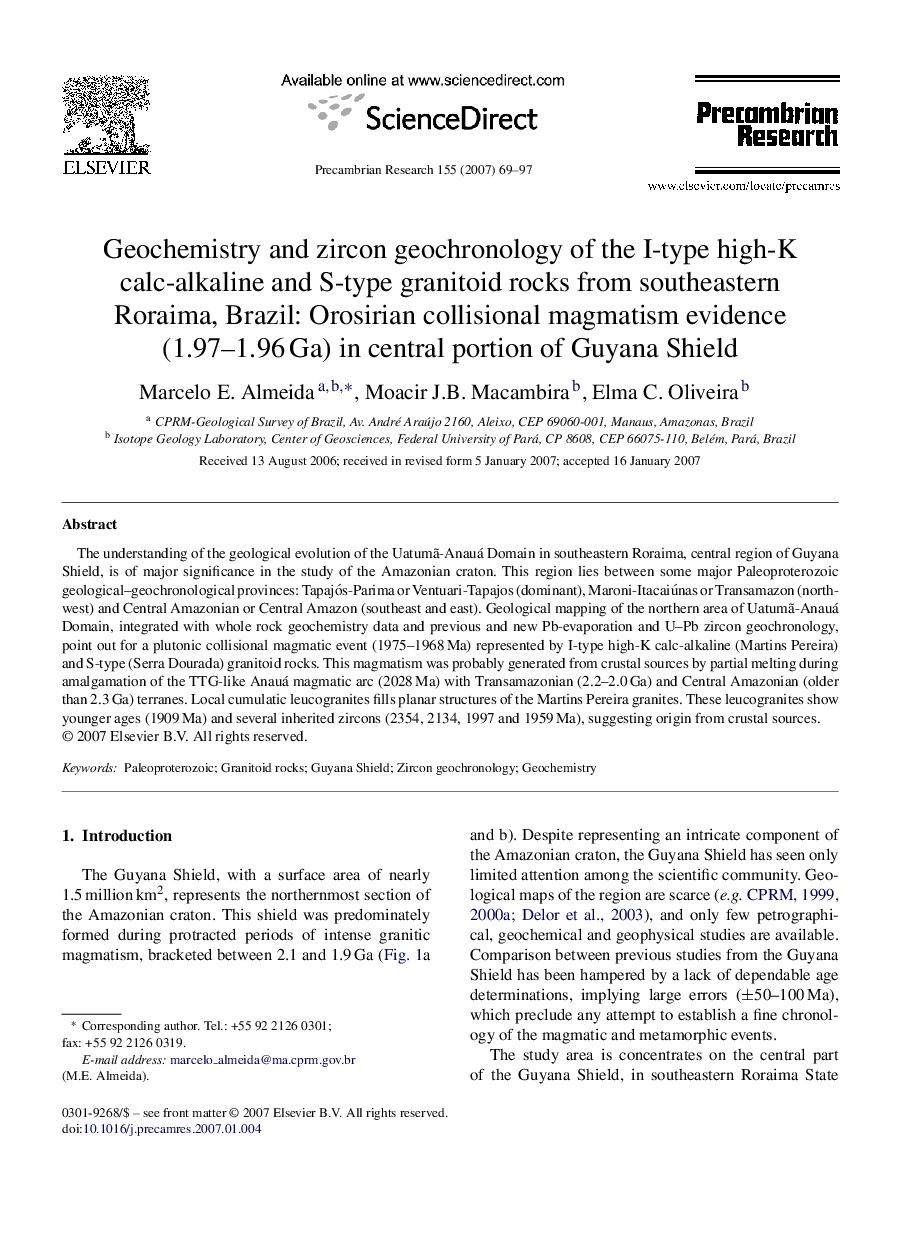| Article ID | Journal | Published Year | Pages | File Type |
|---|---|---|---|---|
| 4724456 | Precambrian Research | 2007 | 29 Pages |
Abstract
The understanding of the geological evolution of the Uatumã-Anauá Domain in southeastern Roraima, central region of Guyana Shield, is of major significance in the study of the Amazonian craton. This region lies between some major Paleoproterozoic geological-geochronological provinces: Tapajós-Parima or Ventuari-Tapajos (dominant), Maroni-Itacaiúnas or Transamazon (northwest) and Central Amazonian or Central Amazon (southeast and east). Geological mapping of the northern area of Uatumã-Anauá Domain, integrated with whole rock geochemistry data and previous and new Pb-evaporation and U-Pb zircon geochronology, point out for a plutonic collisional magmatic event (1975-1968 Ma) represented by I-type high-K calc-alkaline (Martins Pereira) and S-type (Serra Dourada) granitoid rocks. This magmatism was probably generated from crustal sources by partial melting during amalgamation of the TTG-like Anauá magmatic arc (2028 Ma) with Transamazonian (2.2-2.0 Ga) and Central Amazonian (older than 2.3 Ga) terranes. Local cumulatic leucogranites fills planar structures of the Martins Pereira granites. These leucogranites show younger ages (1909 Ma) and several inherited zircons (2354, 2134, 1997 and 1959 Ma), suggesting origin from crustal sources.
Related Topics
Physical Sciences and Engineering
Earth and Planetary Sciences
Geochemistry and Petrology
Authors
Marcelo E. Almeida, Moacir J.B. Macambira, Elma C. Oliveira,
